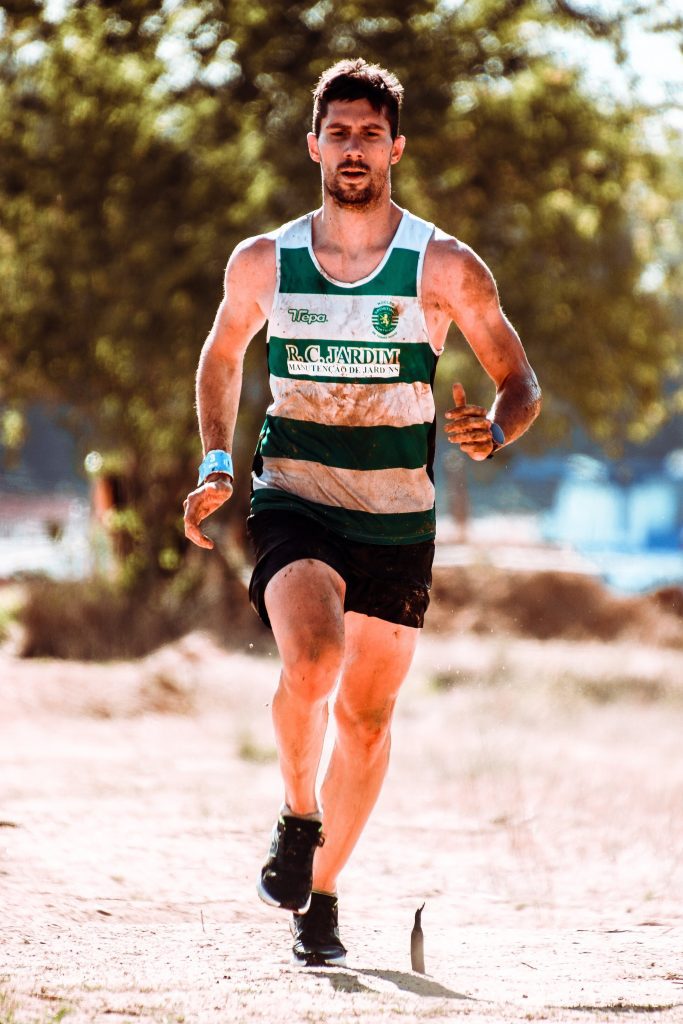Muscles

The most common muscular injuries in athletics are strains, torn muscle fibers, and ruptured muscles, triggered by the sudden overstretching of a tensed muscle, for example when sprinting or stopping.
While often difficult to distinguish between a strain and a tear, a muscle tear can usually be identified by a palpable dent in the belly of the muscle.
In acute cases, patients should follow the RICE protocol (rest, ice, compression, elevation), followed by conservative therapy consisting of, for example, ointment dressings, medication, decreased activity, physiotherapy, and ACP therapy.
More questions?
Our experts are happy to help you
Just give us a call!
Muscle Strain
The most common muscle injuries are muscle strains, muscle fiber tears, and muscle tears in varying degrees. If a muscle is subject to a sudden stretching beyond its physiological ability, we speak of a muscle strain, whereby the anatomical structure of the muscle generally remains intact. It is often difficult, however, to differentiate between a muscle strain and a muscle tear. Microscopic tears to the muscle fibers also often occur in a muscle strain, especially if the extension exceeds the available strength of the muscle, a muscle fiber tear or even a muscle tear can occur. Depending on the extent, muscle fibers can be torn or the muscle can be torn completely in two.
While differentiating between a muscle strain and muscle tear is often clinically difficult, a complete muscle tear can often be detected by the presence of a palpable indentation in the muscle belly – with the exception of very deep muscles, which cannot be palpated.
The typical injury patterns are sudden slowing, sprinting, and even combinations of slowing down and accelerating (for example turning and hitting movements in baseball) all of which can cause hyperextension of a tensed musculature.
The typical symptoms of muscle strain are an immediate and severe stabbing pain, swelling, bruising, restriction of movement even reaching immobility, and, in the case of a muscle tear, a palpable interruption in the muscle itself.
In the case of muscle fibre tears and muscle tears, the pain often increases further overnight as a haematoma (= sanguineous effusion) forms, which presses on the surrounding structures.
It is important to differentiate muscle tears from muscle stiffness (myogelosis). Myogelosis is likewise very painful and can really spoil a marathon or training. It is, however, very easily treated. Areas of muscle stiffness occur as a result of overexertion or incorrect weight bearing and can often be easily felt as definite knots in the muscle. With the right kind of physiotherapy (massaging of the painful knots), however, this problem can often be controlled quite rapidly. Muscle relaxing baths and acupuncture are also helpful. If not treated, the increased muscle tension in the area of the hardening can in some cases lead to muscle fiber tears and renewed stress.
TREATMENT
Prevention:
A range of underlying factors can contribute to muscles being more susceptible to tearing:
- Insufficient warming up can lead to underperfusion and thus the various muscle and joint receptors receiving inadequate information, hindering the optimal interaction of the musculature. Although some newspaper articles have unfortunately recently suggested that stretching before and after doing sports is inconsequential, this is incorrect. A single study was used here as proof, and the many studies showing the positive effects of stretching were not taken into consideration. The truth is that one should lightly warm up before beginning to run. Then come stretching, which significantly reduces the risk of injury and damage from overexertion. One should also stretch after running to prevent muscle shortening. It is certainly true that a sprinter do stretching after running only, but for long-distance runners, warming up and stretching before and after each run is essential.
- Inadequate training or muscle fatigue as a result of too few or too short recovery phases or from overtraining, or even general exhaustion, can lead to overexertion of the musculature, causing muscles to strain more easily.
- Previous muscle tears with scar formation can also increase an athlete's susceptibility to injury due to the lower elasticity of scar tissue.
- Athletes with a tendency to muscle hardening are particularly susceptible to muscle injuries.
If a muscle strain or tear occurs, the RICE rule must be followed immediately – every second counts:
- R is for Rest. Do not grit your teeth and bear the pain: stop the sport immediately. The injured or painful body part needs rest.
- I is for Ice. Treat the affected area immediately with ice, cold running water, or a cold compress (e.g. a cold pack from the pharmacy). Cold reduces bleeding and swelling, however never place cold packs directly onto the skin. Cover the affected site with a towel. Caution: Do not use cold on open wounds!
- C is for Compression. A firm dressing with an elastic bandage is the next step, preferably with a cold compress around it. This helps prevent large haematomas (without compression, heavy bleeding can lead to additional muscle fiber damage and more pronounced injury). Make sure not to apply the bandage too tightly. Bandage, don't constrict!
- E is for Elevation. This reduces blood supply to the injured area and fluid that escapes from the blood vessels and into the surrounding tissue is removed more easily also reducing swelling and pain.
The further therapy for muscle fiber tears is as follows:
Days 1 - 3: Tape dressings, anti-inflammatory ointments and medications, muscle relaxants, electrotherapy, mobilization with crutches.
Starting Day 4: Ultrasound therapy, interference current, physiotherapy. Continued use of crutches while bearing weight up to the pain threshold. Note: No passive stretching or massage for three weeks in the case of strains, for six weeks for muscle fiber tears, and eight to twelve weeks for muscle tears.
While training can be recommenced quite soon for muscle strains (always staying well below the pain threshold), weeks of rest is required for muscle fiber tears, with athletics not being recommenced until the patient is entirely pain free (i.e. even during physiotherapy).
AUTOLOGOUS BLOOD TRANSFUSION
One means of significantly accelerating the healing process is the local administration of growth factors, for example autologous conditioned plasma (ACP), which is made using the patient’s own blood. In this process, blood is collected from a vein in the patient’s arm and centrifuged using a special technique. This activates the platelets, which in turn release proliferating substances - such as platelet-derived growth factor (PDGF) and morphogenetic proteins like transforming growth factor (TGF) - that are important for muscle, tendon, cartilage, and bone healing.

Neue wissenschaftliche Studien zeigen, dass durch die Anwendung von Eigenblut (ACP) die Heilung von Muskelverletzungen, aber auch von Sehnen- und Knorpelproblemen signifikant beschleunigt und verbessert werden kann.
If progress is optimal, athletes can begin training after only two to three weeks, thereby halving the healing time. Moreover, the
application of these growth factors also reduces the development
of inadequate scar tissue.
You can find more information about ACP here: Autologous Conditioned Plasma (ACP).
In the case of significant muscle tears, however, an operation may be necessary, with clearing of the haematoma and suturing of the torn musculature. Unfortunately, sutures of torn muscles (in contrast to tendon ruptures) often hold very poorly, meaning that operations are generally avoided.
Complications after a muscle tear:
In rare cases, a painful calcification can form (myositis ossificans). This usually occurs when the patient returns to training too early in the regeneration process. Additional problems include pronounced scarring, thus significantly reducing muscle elasticity, and possibly painful cyst formations.
Football star Hines Ward wins Super Bowl 2009 with Pittsburgh Steelers despite knee injury after Autologous Blood Tranfusion
>> Read report
Video about platelet-rich plasma therapy (ACP)
>> Watch video
Sore Muscles
Sore muscles are significantly less harmful than the muscle injuries listed above. This is a soreness that results from athletic exertion, particularly after high levels of strain or the use of untrained muscle groups. This is often noticeable within the first few hours after sport.
It was previously thought the sore muscles resulted form overacidification of the muscle due to lactate (the hydroxypropionic acid salt produced during anaerobic exertion). However, this hypothesis has since been dismissed for three reasons:
- Sore muscles occur primarily in untrained athletes who overexert themselves. Lactate is created during any anaerobic exertion, in both novices and professionals.
- According to the lactate hypothesis, muscle ache would have to occur after sporting activities in which particularly high lactate values are measured (sprinting and swimming, for example). Practice shows, however, that the muscle ache occurs more frequently after strength training, which produces very little lactate.
- Lactate has a half-life of about 20 minutes, yet sore muscles often arise hours later, long after lactate levels have returned to normal.
The currently accepted theory is that sore muscles are caused by microscopic muscle fiber tears that store tissue fluid, causing painful muscle swelling. However, the process takes some time, which explains the delayed onset of sore muscles hours after exertion.
TREATMENT
Severely sore muscles should be avoided – i.e. sudden and excessive exertion for which one's current level of training is inadequate. Thorough warming up is also important to ensure good blood flow throughout the muscles prior to maximum exertion.
If you have sore muscles, the following measures can help:
- Alternating cold/warm compresses in the first 24 hours. This helps provide the muscles with oxygen and nutrients as well as flushing out any harmful substances, such as proteins from damaged muscle cells.
- Warm compresses, warm baths, preferably with alleviating bath additives. Saunas and steam baths are also very helpful.
- Anti-inflammatory ointments and essential oils may also provide relief.
More questions?
Our experts are happy to help you
Just give us a call!





